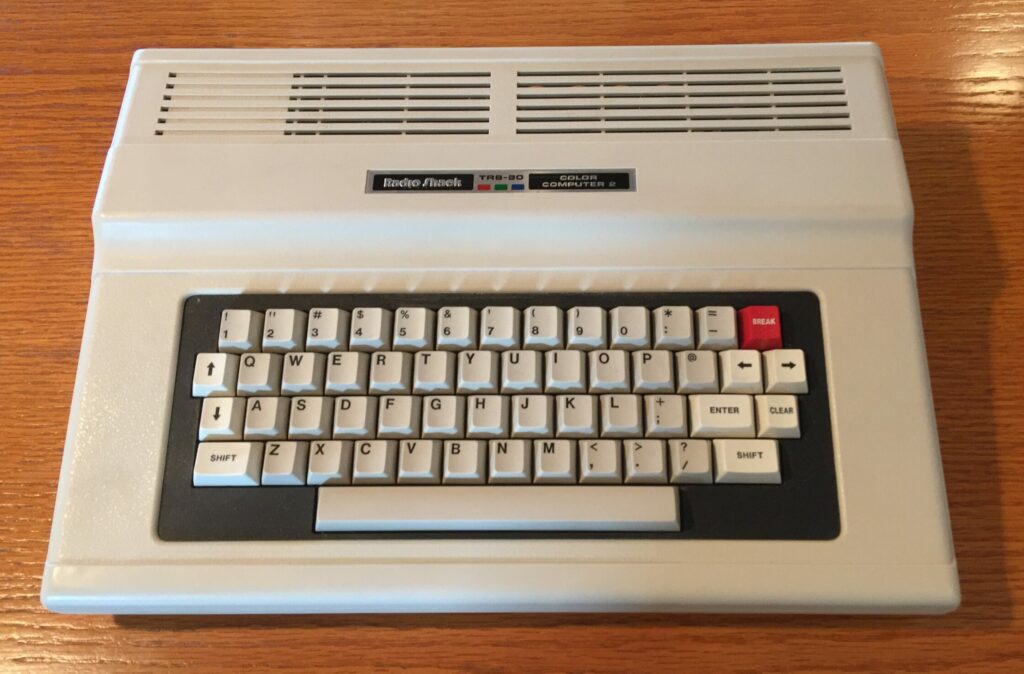Tandy Radio Shack came out with several models and variations of their Color Computer series. Nicknamed the “CoCo” by fans and “Trash 80” by haters, this machine has earned it’s place in history as one of the most influential systems of it’s time.

You could get this model with 16K or 64K as there was no 32K offering back in 1983 when it was released to market. Fortunately, mine has the full 64K RAM.

According to Wikipedia: “Creative Computing wrote in December 1984 that the Color Computer was the best educational computer under $1000. The magazine said that it had fewer but better-quality educational software than the Commodore 64, and that Radio Shack was dedicated to the educational market while Commodore was not.”

The first run of this computer had flatter, more-squat keys (nicknamed “melted keys”) instead of the full keyboard that you see here. I happen to have the final run model CoCo 2 (called “26-3127B” for the 64K version) that has the enhanced MC6847T1 VDG, which allowed for lowercase letters and user-defined border colors. Yes, not having lowercase letters was a thing!
My very first computer was a TRS-80 MC-10. I will cover this in another post, but I wanted to make the connection with this bigger brother here. The MC-10 is essentially a mini version of this.








